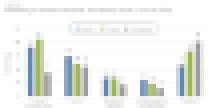Principals, in many schools, are seen as the person responsible for the mental health and well-being of their staff, serving as sounding boards and problem solvers for their teachers, who are carrying the emotional burdens of their own personal and professional lives as well as the struggles, stresses and trauma of their students.
In effect, principals absorb the experiences and exasperations of both students and staff, and in many cases, hear complaints and worries directly from parents and members of the community.
Over the last two-and-a-half years, as the acute phase of the pandemic gave way to a prolonged series of aftershocks featuring staffing shortages and mental health challenges, there was a spotlight on teachers—teacher stress, teacher burnout, teacher resignation. But what about the principals?
A nationally representative survey conducted earlier this year by the RAND Corporation found that 85 percent of principals are experiencing job-related stress, compared with 73 percent of teachers and 35 percent of other working adults. Forty-eight percent of principals are dealing with burnout, while 28 percent report symptoms of depression.

In interviews, a handful of principals put a finer point on what the last couple of years have been like.
“It’s been extremely difficult,” said Michael Brown, a high school principal in Westminster, Maryland, and president of the Maryland Association for Secondary School Principals. “The emotional impact it had on students, staff, parents, everybody in the school community—shouldering those emotions as a leader was a lot and a big burden to carry.”
“The best way to describe it is walking up to the edge of a cliff, with one foot solidly placed on the ground and the other foot ready to go over the edge,” said Paula Callan, a principal in Oakland, Maine. “As an admin, it’s not uncommon to do a 12- or 14-hour day under normal circumstances. Throw in a pandemic, and you’re just so tired. My brain never got the opportunity to shut down, recharge. We’re still in that mode, even though we’re hopeful next school year will be different.”
“My list grew so long that I couldn’t possibly get it all done in one day. It was heavy for me, heavy for my husband,” said Pamela Davis-Vaught, a former principal serving in a high-poverty community in Bristol, Virginia, and current member of the Virginia State Board of Education. “It was an overwhelming bombardment of the senses—fear of keeping everyone safe as best as you possibly can, not taking anything home to loved ones, taking care of children, constantly changing issues.”
Few principals would dispute that the last three school years have been the most taxing of their career. Some would even go so far as to say they have been the most difficult in the history of U.S. education. So it is not surprising that many are now struggling to muster resilience and perseverance, especially since a number of indirect issues brought on by the pandemic are still looming large (think: teacher resignations, increased student behaviors, widespread demoralization).
“The principals have been the glue that has kept education together” in recent years, said Tabari Wallace, the superintendent’s special advisor on principal engagement at the North Carolina Department of Public Instruction. “The reason principal mental health is so concerning today is principals pour into the vessels of everyone else—students, teachers, central office staff. But who is meeting the needs of the principal?”
Nearing a Breaking Point
The mental health and well-being of teachers has reached worrisome lows this school year, a reality that has weighed heavily on principals. That in itself is a source of stress for them, said Sy Doan, an associate policy researcher at RAND and co-author of the recent report on principal well-being.
So is the “continued pressure” on principals and other school leaders this far into the pandemic. It’s less about the virus itself now and more about having enough teachers and substitutes and counselors and cafeteria staff to allow the school day to proceed with some semblance of normalcy, and to address the secondary effects the pandemic has had on students’ academic, mental, physical and social-emotional health.
Callan, the high school principal in Maine, estimated that 75 percent of the challenges she’s had to deal with in the last year would fall under the umbrella of mental health, be it staff burnout, student anxiety or otherwise. Then there was the issue of staffing. It seemed like they never had enough substitute teachers, and out of a staff of 110, she had to hire replacements for 17 roles. “Part of that was retirement, but part of it was they were just burnt out. They couldn’t work in that world of gray,” Callan explained.
Davis-Vaught, of Virginia, left her principalship at an elementary school last month for a role as chronic absenteeism program director for the district. She describes the switch as a necessity, not a choice.
She served in a high-need community where, she said, “teachers were used to poverty and food insecurity.” But when the school transitioned to a virtual environment, teachers saw, through live video, that some students were living in conditions magnitudes worse than they had realized.
“The squalor some kids were living in, the filth … One teacher described hoarding-like conditions in a home,” she said.
Teachers witnessed emotional and physical abuse, unsafe home environments and more, having to call social services numerous times.
“All of that came to my lap, and I was not prepared,” Davis-Vaught admitted.
She stepped back for her own health, which has suffered physically and mentally during the pandemic, and is not sure yet when—or if—she will return.
“We are an inch deep and a mile wide in education right now, spread way too thin,” Davis-Vaught said. “Overall, state leadership and division leadership need to be very concerned about retaining principals from this point forward. Colleagues are at the point where they are just as emotionally burnt out and professionally burnt out as I was feeling. To keep going forward, we’re going to need some support—and some grace, for heaven’s sake.”
Searching for a Salve
One of the positive findings from the RAND survey, Doan noted, is that the majority of principals reported that their schools have at least one mental health support in place, such as counseling sessions, an employee assistance program or yoga classes. But these resources were not often tailored to the needs of staff. Doan used the example of a school providing one free counseling session when a staff member really needed three or four.
School staff, in the survey, noted that while the supports exist, they can be ill-fitting or inaccessible—either a short-term solution, a superficial effort, or just something they don’t have time to use.
“We think it’s a good sign that the majority of schools have something that indicates [they want to improve] mental health and well-being,” Doan said. But schools need to “listen to educators about applicability and also make it so teachers and principals can access what you have on hand.”
The principals interviewed by EdSurge use a range of different strategies to support their own well-being—with varying degrees of success.
Brown, the principal in Maryland, said he has developed routines and structures to support his mental and physical health because he understands how critical they are to his effectiveness as a leader. He is in therapy, attending sessions once a month. And he goes to the gym three to four times a week, “which allows me to release some of that stress and pressure,” Brown said.
Importantly, Brown also sets aside time for his family. He recently returned from a family vacation that “gave me time to recharge and refresh.”
Callan, in Maine, said she has spent much of the pandemic promoting self-care with her staff, urging them to prioritize themselves first if they want to be able to care for their students. But she struggles to put that into practice in her own life.
“I am good at professing. I am horrible at doing it myself,” Callan said. “I just haven’t been able to figure out how to do it. I always want to take that stress and that anxiety off the shoulders of those with whom I’m working … I haven’t been able to figure out how to release it from myself yet. I haven’t had a break since the pandemic started—and that’s by choice. I am more a caretaker of others.”
She does sometimes take a few minutes to go outside during the school day, to walk around the track while the sun streams on her face. It’s usually a quick, five-minute break.
A longer break for Callan is coming soon. She’s been in the field for 39 years, with 29 of them as an administrator. Next year is her last school year before she retires. She is optimistic it will be better than the last three have been. How could it not be?
“With the upcoming school year, we have to see the sun through the clouds,” she said, “and I think the clouds are starting to part way.”


